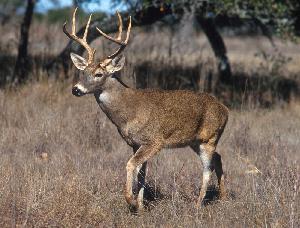 |
Charles Zidar
ANCIENT MAYA ZOOLOGICAL RESEARCH |
|
| Family: | Cervidae | | Genus: | Odocoileus | | Species: | virginianus | | Authority: | Zimmermann, 1780 | | Common Name: | White-tailed Deer | | Maya Name: | Keh | | Faunal Type: | Ungulate | | Depictions: | Codex/Polychrome Ceramics | | Significance: | Deer were an important part of the Maya diet, especially of the elite. Deer were represented in the “transferring of cargo” ceremony (Pohl 1981). Deer were trapped with nets, chased by dogs and shot with blowguns (Pohl 1990). The liver, heart, lungs, stomach, haunches, brain and blood were most likely eaten. The left side of the deer may have been the most important part, linking it with the heart and its life-giving power, the underworld or femininity – all tied to the regeneration of life (Schlesinger 2001). Widely represented animal in ancient Maya iconography. | | Photos: | Click on an image below for high resolution comparison. |
Other Faunal Photos: Additional views of the faunal species, click on a photo below to view larger image. |  | | Artifact Photo(s) Courtesy of Justin Kerr (FAMSI); Animal Photo(s) Courtesy of Wikipedia GNU General Public License Version 1.2, November 2002; Creative Commons Attribution ShareAlike 2.0/2.5 License(s). |
|
Previous Page |
Introductory Page
|
|
Return to top of page |
|
|
|
|


